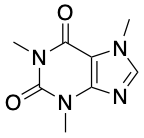

The L- enantiomer is the form found in freshly prepared teas and some human dietary supplements. Deliberately shading tea plants from direct sunlight, as is done for matcha and gyokuro green tea, increases L-theanine content.


Theanine is substantially present in black, green, and white teas from Camellia sinensis in quantities of about 1% of the dry weight. It was discovered as a constituent of tea ( Camellia sinensis) in 1949, and in 1950 a laboratory in Kyoto successfully isolated it from gyokuro leaf, which has high theanine content. Theanine is found primarily in plant and fungal species. Amino acid racemization in aqueous media is a well-established chemical process promoted by elevated temperature and non-neutral pH values prolonged heating of Camellia extracts-possible for oversteeped teas and in undisclosed commercial preparative processes-has been reported to result in increasing racemization of theanine to give increasing proportions of the nonnatural D-theanine, up to equal proportions of each enantiomer. While natural extracts that are not harshly treated are presumed to contain only the biosynthetic L- enantiomeric form, mishandled isolates and racemic chemical preparations of theanines necessarily contain both theanine and its D-enantiomer (and from racemic syntheses, in equal proportion), and studies have suggested that the D-isomer may actually predominate in some commercial supplement preparations. Relative to theanine, the opposite ( D-, R-) enantiomer is largely absent from the literature, except implicitly. Theanine is a derivative of glutamine that is ethylated on the amide nitrogen (as the name N 5-ethyl- L-glutamine describes), or alternatively, to the amide formed from ethylamine and L-glutamic acid at its γ- (5-) side chain carboxylic acid group (as the name γ-L-glutamylethylamide describes). Theanine is an analog of this amino acid, and its primary amide, L- glutamine (also a proteinogenic amino acid). The name theanine, without prefix, is generally understood to imply the L- ( S-) enantiomer, derived from the related proteinogenic L-amino acid glutamic acid.

The chemical name N 5-ethyl- L-glutamine and other synonyms (see box) for theanine reflect its chemical structure. Therefore, health claims for L-theanine are not recognized in the European Union. The European Food Safety Authority, when asked to provide a scientific opinion, concluded that a cause and effect relationship had not been established between consumption of L-theanine and improved cognitive function, alleviation of psychological stress, maintenance of normal sleep, or reduction of menstrual discomfort. The German Federal Institute for Risk Assessment, an agency of their Federal Ministry of Food and Agriculture, objects to the addition of L-theanine to beverages. In the United States, the Food and Drug Administration (FDA) considers it to be generally recognized as safe (GRAS) and allows its sale as a dietary supplement. In Japan, L-theanine has been approved for use in all foods, with some restrictions in the case of infant foods. The regulatory status of theanine varies by country. The opposite enantiomer, D-theanine, has been studied less. The name " theanine" without a prefix generally implies the enantiomer L-theanine, which is the form found in tea leaves and as a dietary supplement ingredient. Theanine provides a unique brothy or savory ( umami) flavor to green tea infusions. It was discovered as a constituent of green tea in 1949 in 1950, it was isolated from gyokuro leaves. Theanine / ˈ θ iː ən iː n/, also known as L-γ-glutamylethylamide and N 5-ethyl- L-glutamine, is an amino acid analogue of the proteinogenic amino acids L-glutamate and L-glutamine and is found primarily in particular plant and fungal species.


 0 kommentar(er)
0 kommentar(er)
